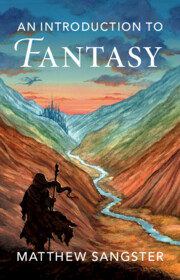Book contents
- An Introduction to Fantasy
- An Introduction to Fantasy
- Copyright page
- Contents
- Figures
- Introduction
- 1 Fantasy, Language and the Shaping of Culture
- 2 The Value of Iteration
- 3 Root Formations
- 4 Enlightenment and its Shadows
- 5 Fashioning Worlds
- 6 Fantastic Communities and Common Ground
- Envoi
- Acknowledgements
- Select Bibliography
- Index
3 - Root Formations
Published online by Cambridge University Press: 07 October 2023
- An Introduction to Fantasy
- An Introduction to Fantasy
- Copyright page
- Contents
- Figures
- Introduction
- 1 Fantasy, Language and the Shaping of Culture
- 2 The Value of Iteration
- 3 Root Formations
- 4 Enlightenment and its Shadows
- 5 Fashioning Worlds
- 6 Fantastic Communities and Common Ground
- Envoi
- Acknowledgements
- Select Bibliography
- Index
Summary
This chapter explores the ways in which modern works of Fantasy remake longstanding cultural forms. It modifies John Clute’s notion of taproot texts by focusing on larger-scale modes of meaning-making rather than individual influential works, examining the ways in which Fantasy is deeply informed by myths and legends, epic and romance, folk and fairy tales, and religions. Any one of these could be the subject for a book in itself, so the chapter employs a selective approach, giving a sense of each mode’s larger patterns, exploring how these have been taken up in Fantasy and examining a small selection of case studies. The myths and legends section focuses on how recent Fantasy texts remake the story of Hades and Persephone, considering Anaïs Mitchell’s musical Hadestown, Supergiant’s game Hades and Rachel Smythe’s webtoon Lore Olympus. Other key works discussed include Avatar: The Last Airbender, Sofia Samatar’s The Winged Histories, Angela Carter’s ‘The Bloody Chamber’ and Kelly Link’s ‘Travels with the Snow Queen’.
- Type
- Chapter
- Information
- An Introduction to Fantasy , pp. 162 - 224Publisher: Cambridge University PressPrint publication year: 2023

